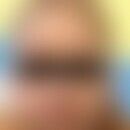DefinitionThis section has been translated automatically.
ISQMR is a severe autosomal recessive disorder characterized by ichthyosis from birth, profound psychomotor retardation with essentially absent development, spastic quadriplegia, seizures, global developmental delay, mental retardation, childhood seizures, spastic quadriplegia, delayed myelination and cerebral atrophy. Marked intrafamilial variability has been reported.
EtiopathogenesisThis section has been translated automatically.
This is caused by mutations in the ELOVL4 gene. The protein encoded by ELOVL4, a fatty acid elongase, is responsible for the biosynthesis of very long-chain fatty acids in the brain, retina and skin. Very long-chain fatty acids (VLCFAs) play an important role in membrane structure and cellular signaling. Fatty acid elongases catalyze the first and rate-limiting step of VLCFA synthesis.
Heterozygous mutations in ELOVL4, the gene encoding one of the elongases, cause macular degeneration in humans (and retinal abnormalities in mice) and spinocerebellar ataxia type-34.
On the other hand, various homozygous mutations are associated with ichthyosis, spastic quadriplegia and mental retardation (Diociaiuti A et al. 2021).
The following mutations were detected in an Italian family:
- homozygous ELOVL4 frameshift variant c.435dupT (p.Ile146TyrfsTer29 )
- heterozygous variant c.208C>T (p.Arg70Ter) and c.487T>C (p.Cys163Arg)
You might also be interested in
ClinicThis section has been translated automatically.
Both patients were born with a collodion membrane, followed by diffuse mild hyperkeratosis and scaling, localized erythema and palmoplantar keratoderma. One infant had mild facial dysmorphism. The infants suffered from failure to thrive and severe gastroesophageal reflux with pulmonary aspiration. They also showed axial hypotonia, limb hypertonia and lack of head control with poor eye contact from infancy. Visual evoked potentials showed significantly increased latency and poor morphologic definition, indicating alteration of the retro-retinal visual pathways in both patients.
HistologyThis section has been translated automatically.
Histopathologic examination in 2 Italian patients (Diociaiuti A et al. 2021) showed moderate epidermal acanthosis and papillomatosis, a well-developed granular layer (GL) and compact hyperkeratosis with isolated parakeratotic cells. In addition, several irregularly distributed cytoplasmic vacuoles were visible in the basal and suprabasal epidermal layers.
Ultrastructural examination revealed abnormal lamellar bodies of various sizes with disordered and disorganized lamellar contents in the epidermal spiny and granular layers. In addition, small empty vacuoles were seen in the str. granulosum. The intercellular spaces of the upper granular and horny layers were often dilated and filled with disorganized lamellar structures and amorphous material. A few corneocytes with nuclear remnants and inhomogeneous keratin matrix were observed.
Note(s)This section has been translated automatically.
Very long-chain fatty acids (VLC-FAs), which consist of more than 20 carbon atoms, are essential for the biosynthesis of cell membranes in the brain, skin and retina. VLC-FAs are extended to over 28 carbon atoms by the enzyme ELOVL4, a fatty acid elongase (see fatty acid synthesis below)
Variants in ELOVL4 are associated with three Mendelian disorders:
- Autosomal dominant (AD) Stargardt-like macular dystrophy type 3
- Autosomal dominant spinocerebellar ataxia 34
- The autosomal recessive disorder congenital ichthyosis, spastic quadriplegia and impaired intellectual development (ISQMR) (Alabdulrazzaq F et al. 2023).
LiteratureThis section has been translated automatically.
- Alabdulrazzaq F et al. (2023) Expanding the allelic spectrum of ELOVL4-related autosomal recessive neuro-ichthyosis. Mol Genet Genomic Med 11:e2256.
Aldahmesh MA et al. (2011) Recessive mutations in ELOVL4 cause ichthyosis, intellectual disability, and spastic quadriplegia. Am J Hum Genet 89:745-750.
Diociaiuti A et al. (2021) Two Italian Patients with ELOVL4-Related Neuro-Ichthyosis: Expanding the Genotypic and Phenotypic Spectrum and Ultrastructural Characterization. Genes (Basel) 12:343.
Incoming links (1)
ELOVL4 gene;Disclaimer
Please ask your physician for a reliable diagnosis. This website is only meant as a reference.






